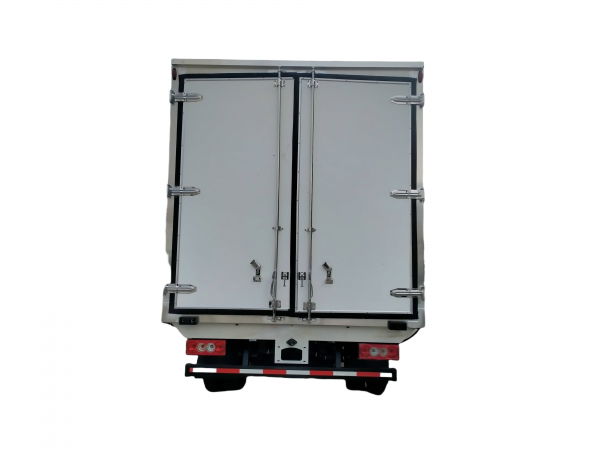Introduction
Truck-mounted cranes have long been a staple in the construction and logistics industries, providing a versatile and mobile solution for lifting and transporting heavy loads. In what is a box truck , technological advancements have taken this essential tool to the next level with the integration of remote control capabilities. This article explores the benefits and advantages of truck-mounted cranes with remote control, highlighting how this innovation is revolutionizing efficiency and safety on job sites around the world.
Evolution of Truck-Mounted Cranes
Truck-mounted cranes have a rich history dating back to the early 20th century when the first hydraulic truck crane was introduced. These cranes were typically operated using manual controls, requiring skilled operators to maneuver the crane and lift loads safely and efficiently. Over the years, improvements in technology have led to the development of more advanced truck-mounted cranes with increased lifting capacities and reach.
One of the most significant advancements in recent years has been the integration of remote control systems into truck-mounted cranes. This technology allows operators to control the crane from a distance, providing increased flexibility and precision in lifting operations. Remote control systems have become increasingly popular in the construction and logistics industries due to their ability to improve efficiency, safety, and productivity on job sites.
Benefits of Truck-Mounted Cranes with Remote Control
1. Enhanced Safety
Safety is a top priority in any lifting operation, and truck-mounted cranes with remote control offer several advantages in this regard. By allowing operators to control the crane from a safe distance, remote control systems reduce the risk of accidents and injuries associated with manual operation. Operators can maintain a clear line of sight of the load and the surrounding environment, minimizing the chances of collisions or other hazards.
In addition, remote control systems often come equipped with safety features such as overload protection and emergency stop functions, further enhancing the safety of lifting operations. These features help prevent accidents caused by overloading the crane or other unforeseen circumstances, providing peace of mind to operators and site managers.
2. Increased Efficiency
Remote control systems offer significant improvements in efficiency compared to manual operation of truck-mounted cranes. Operators can position the crane more precisely and quickly using remote controls, reducing the time and effort required to complete lifting tasks. This increased efficiency translates to cost savings for companies, as projects can be completed faster and with fewer resources.
Furthermore, remote control systems allow operators to multitask and perform other duties while operating the crane, further boosting productivity on job sites. This flexibility enables operators to work more efficiently and effectively, leading to improved overall performance and project outcomes.
3. Versatility and Maneuverability
Truck-mounted cranes with remote control are highly versatile and maneuverable, making them ideal for a wide range of lifting applications. Operators can easily navigate tight spaces and complex job sites using remote controls, allowing them to access hard-to-reach areas and lift loads with precision. This versatility is particularly valuable in urban environments and construction sites where space is limited and maneuverability is essential.
Remote control systems also enable operators to adjust the crane's settings and configurations on the fly, making it easy to adapt to changing job site conditions. This flexibility allows operators to maximize the crane's capabilities and efficiency, ensuring that lifting tasks are completed safely and effectively.
4. Improved Operator Comfort and Ergonomics
Operating a truck-mounted crane can be physically demanding, requiring operators to remain in uncomfortable positions for extended periods. Remote control systems alleviate these ergonomic challenges by allowing operators to control the crane from a more comfortable and ergonomic position. This reduces the strain and fatigue associated with manual operation, improving operator comfort and reducing the risk of musculoskeletal injuries.
In addition, remote control systems often feature intuitive interfaces and ergonomic designs that make operating the crane easier and more user-friendly. Operators can focus on the task at hand without being distracted by complex controls or cumbersome equipment, leading to smoother and more efficient lifting operations.
5. Remote Monitoring and Diagnostics
Remote control systems for truck-mounted cranes often come equipped with advanced monitoring and diagnostic capabilities that allow operators to track the crane's performance in real-time. Operators can monitor critical parameters such as load capacity, hydraulic pressure, and engine status remotely, enabling them to identify potential issues and take corrective action before they escalate.
Remote monitoring and diagnostics also provide valuable data insights that can help optimize crane performance and maintenance schedules. By analyzing performance data over time, operators can identify trends and patterns that may indicate the need for maintenance or adjustments, ensuring that the crane operates at peak efficiency and reliability.
Case Studies and Real-World Applications
The benefits of truck-mounted cranes with remote control are evident in numerous case studies and real-world applications across various industries. For example, in the construction industry, remote control systems have been instrumental in improving safety and efficiency on job sites with complex lifting requirements. Operators can navigate tight spaces, maneuver around obstacles, and lift heavy loads with precision, reducing the risk of accidents and delays.
In the logistics and transportation sector, truck-mounted cranes with remote control have revolutionized loading and unloading operations at warehouses and distribution centers. Operators can quickly and safely move cargo from trucks to storage facilities using remote controls, minimizing downtime and maximizing productivity. Remote control systems have also been used in disaster response and recovery efforts, allowing operators to safely lift and move debris in emergency situations.

Conclusion
Truck-mounted cranes with remote control represent a significant advancement in lifting technology, offering a wide range of benefits and advantages for operators and companies alike. From enhanced safety and efficiency to improved versatility and maneuverability, remote control systems are transforming the way lifting operations are conducted in the construction, logistics, and other industries. By investing in these innovative solutions, companies can improve productivity, reduce risks, and achieve better outcomes on job sites around the world.
